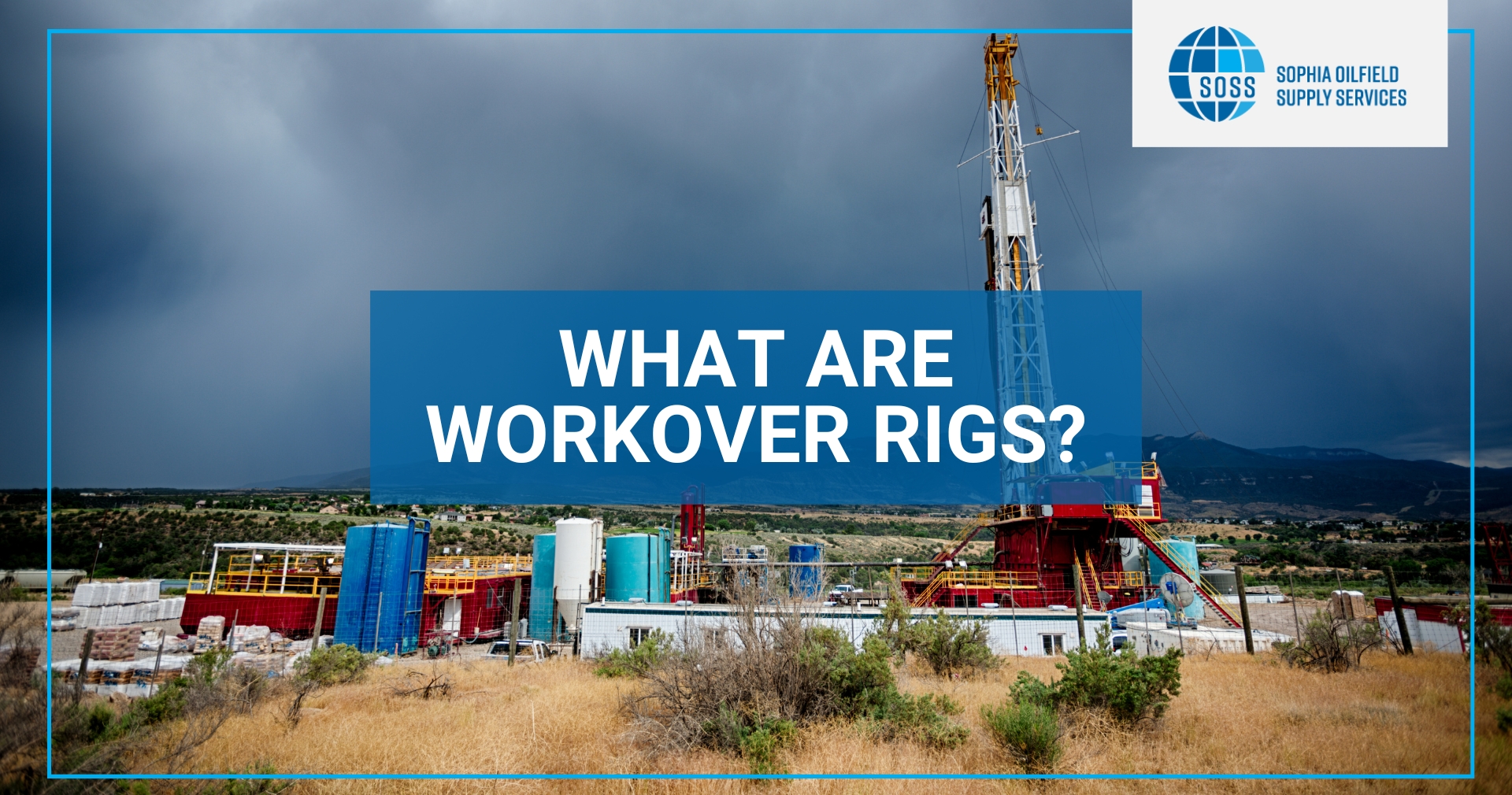So what are workover rigs exactly and what do they do?
When an oil well stops performing as expected, companies need a way to fix it. This is where workover rigs come in. These rigs are special machines designed to handle maintenance or repair jobs on wells, often after the drilling phase is finished. Without them, many wells would stop producing altogether.
Today, you will learn:
- What workover rigs are and how they work.
- How workover rigs differ from drilling rigs.
- Why workover rigs play a big role in keeping oil and gas wells productive.
Let’s start by breaking down what workover rigs are.
What Are Workover Rigs?
A workover rig is a machine that helps fix or maintain oil and gas wells. These wells are already drilled, but they might need repairs or improvements, which plays a significant role in the global workover rigs market as companies seek efficient solutions to keep their wells productive.
Learn more about what do workover rigs do and the various services they provide to keep wells operating smoothly.
Here’s a simple way to think about it:
- Drilling rigs create the well.
- Workover rigs fix the well.
Workover rigs are used when a well has problems, like:
- Worn-out equipment.
- Blockages that slow down the flow of oil or gas.
- The need to replace parts, like tubing.
Imagine this: You have a car. After some time, you need to change the tires or fix a leak. The car is still good, but it needs a little help. A workover rig is like the mechanic for an oil well.
Key points about workover rigs:
- Smaller than a drilling rig.
- Used for repairs and improving well performance.
- Mobile: Some can be mounted on trucks for easy transport.
These rigs save time and money by fixing existing wells instead of drilling new ones. It’s all about getting the most out of the wells that are already there.
Want to learn more about how deep drilling rigs go? Check out this article to see how drilling sets the stage for workover rigs to come in later.
Their mast components are designed to lift and support substantial equipment, allowing them to drill new wells from scratch.
How Workover Rigs Operate
Workover rigs might seem complex, but they follow a straightforward process. Their job is to fix or improve wells so they can keep producing oil or gas.
Key parts of a workover rig:
- Derrick: The tall structure that supports heavy equipment.
- Hoist: Used to lift and lower things like tubing.
- Pump: Helps circulate fluids in and out of the well.
How does a workover rig work?
- First, the rig is moved to the well site. Some rigs are on trucks, making it easy to move them around.
- The rig’s hoisting system and pump are set up to work on the well. These tools help remove or replace parts, such as production tubing, or pumps inside the well, ensuring the well’s production is restored.
- Once the repair or improvement is done, the well is tested to make sure it’s working better than before.
What’s the result?
The well can continue producing oil or gas at a higher rate, thanks to the repairs or upgrades made by the rig.
Want to see how drilling rigs actually work before the workover rig comes into play? Check out this article to learn more about the drilling process.
Workover rigs are fast and flexible, helping oil companies get more life out of existing wells without drilling new ones.
This saves time and money in the long run.
Key Functions and Applications of Workover Rigs
Workover rigs are like the repair crew for oil and gas wells. They handle various tasks such as tubing workover, where worn-out tubing is replaced to maintain efficient well production. Their main job is to keep wells working as efficiently as possible.
Here’s what they do:
1. Well Maintenance
- Tubing replacement: Over time, the tubing inside a well wears out. The rig pulls out the old tubing and replaces it with new tubing.
- Removing blockages: Sometimes, wells get blocked, which reduces the flow of oil or gas. Workover rigs help clear these blockages.
- Well cleaning: Workover rigs can also be used to clean out the well, getting rid of sand or other debris that slows down production.
2. Well Improvement
- Well stimulation: Sometimes, a well stops producing as much as it used to. A workover rig can be used to improve the well’s output by adding special chemicals or using other methods to stimulate the flow of oil or gas.
3. Well Completion
- Final steps: After drilling a well, a workover rig is often used to complete the well and get it ready for production.
Companies often weigh the costs involved with drilling and maintaining oil wells when deciding whether to use workover rigs. Workover rigs are a cost-effective way to extend the life of wells without the need to drill new ones, saving both time and money in the long run.
Workover Rigs vs. Drilling Rigs
Workover rigs and drilling rigs may seem similar, but they serve different purposes. While drilling rigs are used to create new wells, workover rigs focus on workover operation and repairs on existing wells, helping maximize the productivity of wells that are already drilled.
Key differences between workover rigs and drilling rigs:
- Purpose: Drilling rigs are used to create new wells, while workover rigs are used for maintenance and repairs on wells that have already been drilled.
- Size: Drilling rigs are usually much larger and more complex than workover rigs, which are smaller and more mobile.
- Operation: Drilling rigs handle the heavy work of boring into the ground, while workover rigs focus on smaller tasks like replacing tubing, clearing blockages, or boosting well production.
For example, once a well has been drilled and is in use, a workover rig might be called in to remove worn-out tubing or fix issues that are affecting production. Drilling rigs, on the other hand, aren’t designed for this kind of maintenance work. They are built to dig deep into the earth and establish new wells.
Frequently Asked Questions (FAQs)
What does a workover rig operator do?
A workover rig operator controls the rig during maintenance and repair jobs on wells. They handle equipment like hoists and pumps to ensure the well is properly serviced.
Is working on a workover rig hard?
Yes, it can be physically demanding and requires focus due to the heavy machinery and safety protocols. It also often involves working long hours in tough environments.
What are workover rigs used for?
Workover rigs are used for fixing or improving oil and gas wells. This includes tasks like replacing worn tubing or clearing blockages.
What is an example of a workover?
A common example is replacing damaged tubing inside a well to restore production. Another method is coiled tubing, where a continuous length of flexible pipe is inserted into the well to clean out blockages or perform other interventions that restore the well’s flow.
How many workers are on a rig?
A typical workover rig crew consists of 3 to 6 people. The team size can vary depending on the complexity of the job.
About Sophia Oilfield Supply Services
Sophia Oilfield Supply Services has been providing top-quality workover rigs and equipment for more than 30 years. Workover rigs are essential for maintaining and repairing wells, and choosing the right rig can make all the difference in extending the life of your well. Our workover rigs are built to handle tough conditions while delivering reliable performance and efficiency.
Ready to keep your wells running at their best? Contact us today to receive a customized estimate for your workover rig. Our team of experts will help you find the right equipment to maximize your well’s productivity and ensure long-term success in the oilfield.

